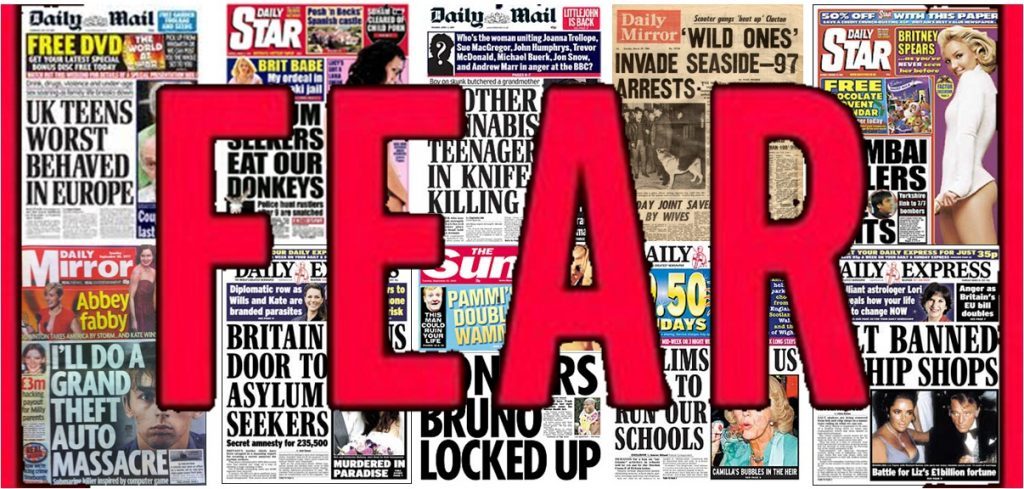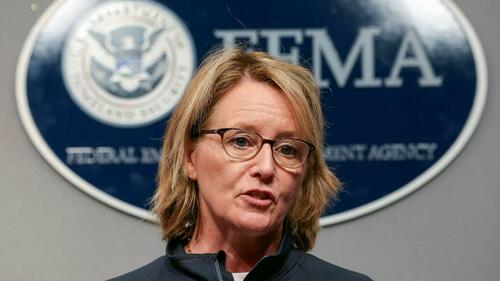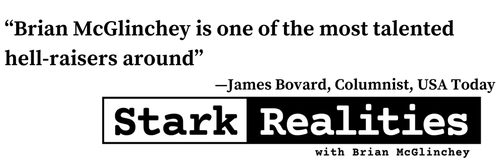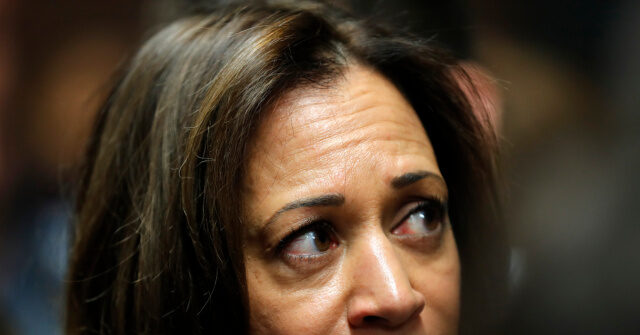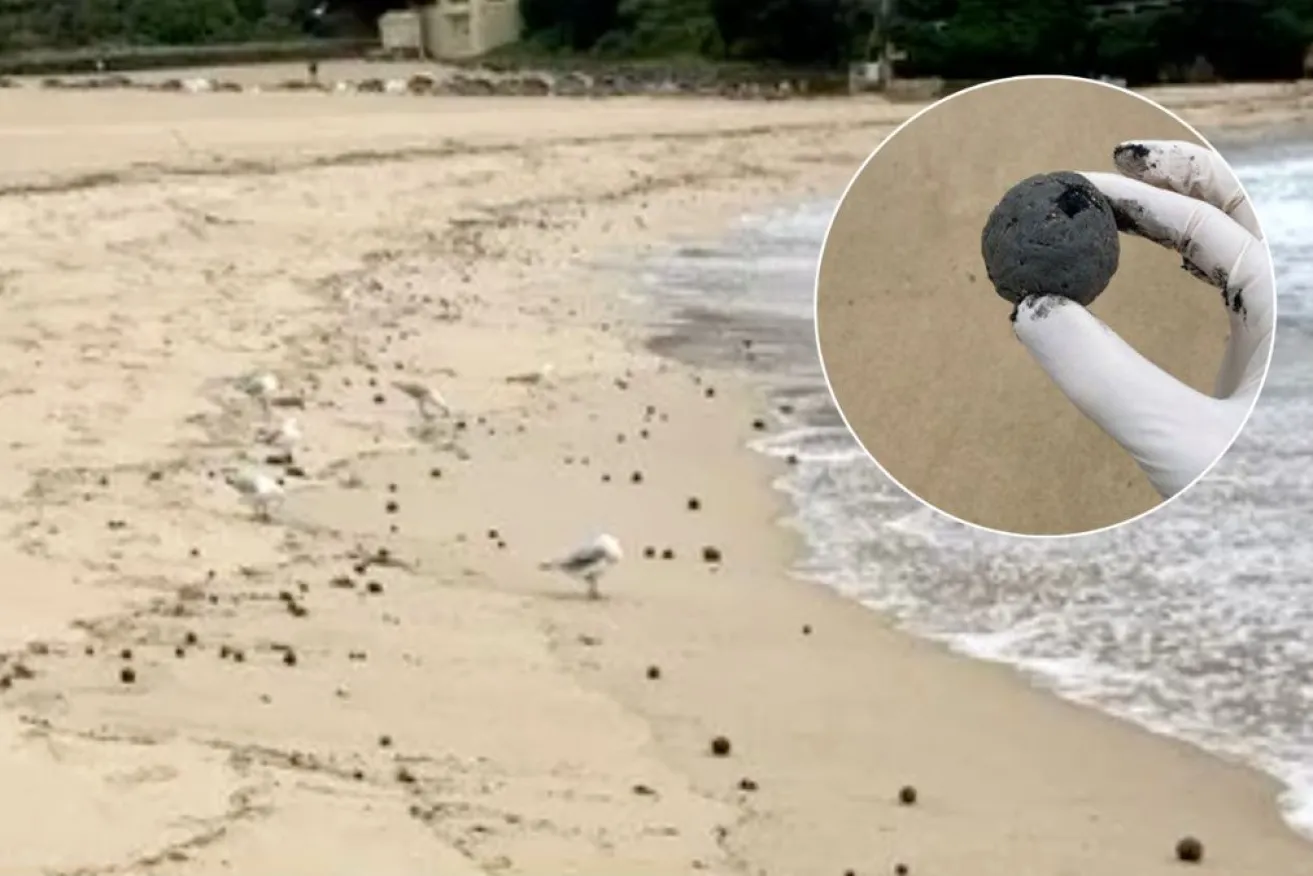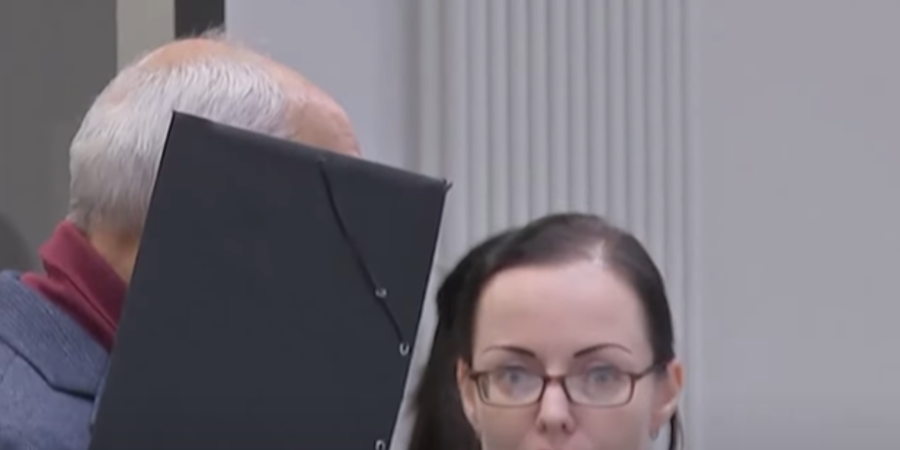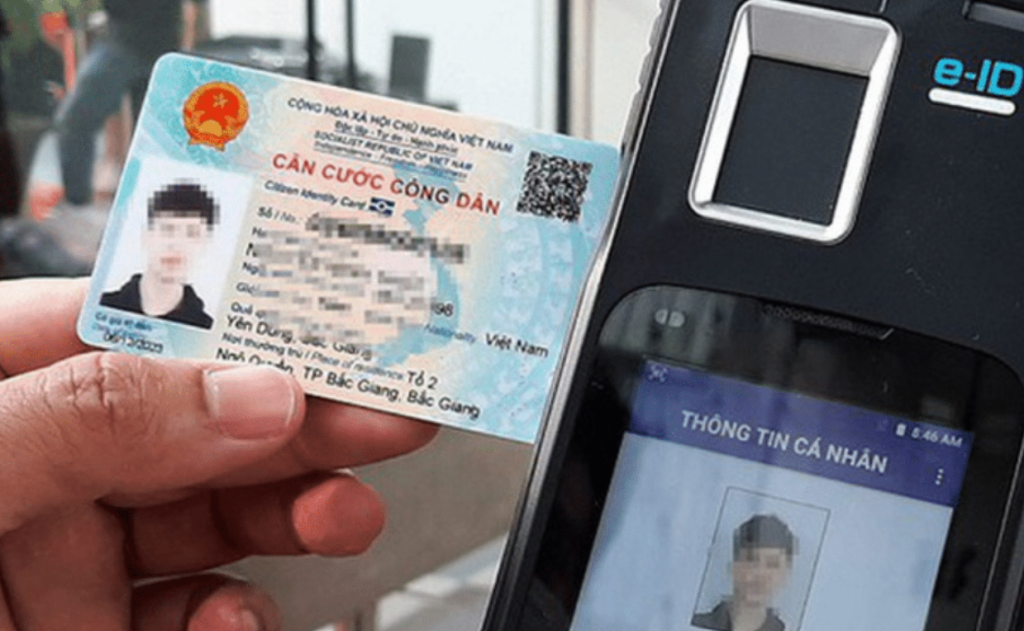Mainstream media harpies in panic mode, going crazy…
from Revolver News: Well, folks, the mainstream media harpies are coming unglued. It’s pure panic mode for these lady propaganda reporters as we inch closer to Election Day. And judging by how Harris and Walz are behaving, the panic is justified. Truthfully, you have to guess that the Harris/Walz internal polls must be brutal. They’ve […]
FEMA Still Paying $9,000 For COVID Funerals, Billions On Pandemic Payouts
FEMA Still Paying $9,000 For COVID Funerals, Billions On Pandemic Payouts
By Brian McGlinchey at Stark Realities
As the Federal Emergency Management Agency (FEMA) carries out widely-criticized responses to Hurricanes Helene and Milton, officials say the agency’s Disaster Recovery Fund is incapable of handling a third major storm. While some are circulating false accusations that disaster funds have been diverted to immigrants or poured into the proxy war in Ukraine, a review of the agency’s 2024 outlays reveals a different, ongoing drain on FEMA’s coffers: Long after the end of the declared Covid-19 emergency, FEMA is still pumping out billions of dollars to pay for pandemic expenses — including, believe it or not, up to $9,000 each for funerals.
As previously detailed here at Stark Realities, governments’ response to the Covid-19 pandemic was disastrous on many fronts. While the Pandora’s box of collateral damage included widespread harm to the physical and mental health of individuals, it also dealt a blow to the nation’s fiscal well-being, as the federal government recklessly showered trillions of dollars it didn’t have on people, businesses and state and local governments — with much of that money intended to offset the effects of government’s own tyrannical and counterproductive policies.
While all but the most diehard Branch Covidians have moved on from that dark chapter, the federal government has a distinct version of “long Covid.” Though it’s not clear where all the money is going, FEMA is paying up to $9,000 each to reimburse funeral expenses for those who die from Covid.
That’s an especially odd example of government picking winners and losers. As Stanford University School of Medicine professor and prominent Covid-regime critic Jay Bhattacharya said in a social media post that drew my attention to this giveaway program and its hyper-longevity, “There are apparently more and less worthy ways to die in the US.”
Indeed: Why is the family of someone who dies from Covid more deserving of a government-paid funeral than the family of someone who dies from cancer, cardiac arrest or a car accident? It bears emphasis that this question was every bit as relevant in 2020 as it is today.
The favoring of one cause of death over another isn’t the only winners-and-losers dimension of the funeral program: There’s no reimbursement for those who’d planned ahead via pre-paid funerals. Echoing the grievances of people who saved up to pay for college only to see their neighbor’s student loans forgiven by vote-buying politicians, some families say they feel like they’re being punished for having planned for the future.

This isn’t FEMA’s first funereal foray, but it’s the largest by orders of magnitude. In the 10 years before the pandemic, FEMA received about 6,000 applications for funeral assistance for various natural disasters. As of Jan. 1, 2024, FEMA had approved more than 300,000 for Covid-19, shelling out $3.15 billion to cover an expense that, whether caused by a pandemic or something else, is universally inevitable.
Of course, the magnitude of that inevitable expense isn’t fixed, and the mere presence of a government subsidy reliably results in higher costs. Knowing they can spend up to of $9,000 of other people’s money on their Covid-19 funeral, it’s safe to assume many affected families have made more expensive choices than they otherwise would — bolstering the profits of funeral homes, casket producers and other associated businesses.
Unsurprisingly, the National Funeral Directors Association (NFDA), a trade group and principal lobbyist for the industry, hailed the passage of the COVID 19 Relief Package/Consolidated Appropriations Act of 2020. The legislation not only funded Covid funeral reimbursements, NFDA enthused, but also funeral payments “for any subsequent major disaster declared by the President,” an expansion the group had been lobbying for.
To qualify for reimbursement under the funeral assistance program, the death certificate must either indicate the death was caused by Covid-19 — or that it merely may have been caused by Covid-19 or “Covid-19-like symptoms.”
As is increasingly the case with government handouts, there’s no requirement of US citizenship, for either the decedent or the person paying the funeral expenses. A family’s ability to pay for the funeral is likewise irrelevant — there are no income or wealth criteria.
There’s more to the cost of this program than the reimbursements themselves — there’s also significant overhead. Pressed to implement the program as soon as possible, FEMA opted against creating a website to receive applications for reimbursement, choosing to instead require that all claims be submitted via 20-minute phone conversations, necessitating the creation of a huge call center operation staffed by 5,000 phone agents, all of whom would require training and support.
While you might think word-of-mouth would be sufficient to encourage widespread use of a handout program, still more money was spent on advertising. In a 2022 report lamenting that many eligible people hadn’t cashed in yet, NPR’s Blake Farmer — blissfully oblivious to the federal government’s relentless march to insolvency — cheerfully said “FEMA is launching an outreach campaign to promote the program, since there’s plenty of money left.”

Fittingly, NPR found the national leader in funeral reimbursement claims at the time was Washington DC, with applications amounting to 77% of Covid-19 fatalities.
Whether a government handout program takes the form of cash reimbursement, tax credit or subsidy, it inevitably has another cost dimension: so-called “improper payments,” a term encompassing both fraud and errors made by applicants and administrators.
On that score, FEMA’s Covid-19 funeral-funding program has come under repeated criticism from government watchdogs. In 2022, the General Accountability Office (GAO) identified “several gaps in FEMA’s internal controls meant to prevent improper or fraudulent payments” — such as double-payments when two different parties applied for reimbursement for the same funeral, or payments made to applicants who didn’t meet program requirements.
That same year, the Department of Homeland Security’s Office of Inspector General (OIG) sent an “urgent” alert to FEMA, saying its audit found the agency “regularly reimburses applicants for expenses expressly excluded from funeral assistance” by the agency’s own policy guide that serves as its interpretation of regulations.
Reimbursable expenses include funeral services, cremation, caskets, urns burial plots, ceremony costs, headstones and clergy compensation. Among the unauthorized expenses are catering, gratuities, flowers and transportation. The OIG learned that, rather than directing claims processors to scrutinize claims to ferret out unauthorized expenses, FEMA told them to “accept for reimbursement all verifiable funeral expenses…listed on expense documents from a funeral home.” Thus, if flowers, for example, were listed on a funeral home bill, reimbursement was approved regardless of FEMA’s standing rule against covering that cost.
The OIG found that 59% of approved applications included ineligible expenses. In one case, FEMA’s loose approach led to an improper reimbursement for $3,760 for transportation that included “two lead escort vehicles, a limousine, and a horse and carriage.”

FEMA admitted its lawyers hadn’t even reviewed its Covid operating procedures. Worse, FEMA resisted the OIG’s post-inquiry recommendations, exasperatingly arguing that if the agency started applying the rules correctly, it “would create inequalities to the detriment of future applicants, who would qualify for less assistance for fewer eligible expenses.” GAO rightly countered that FEMA was itself creating inequalities — by reimbursing funeral expenses that it hadn’t reimbursed for previous disasters and shouldn’t reimburse for future ones.
While it serves as a vivid illustration of irrational, wasteful and persistent spending that accompanies both bona fide and contrived crises, the funeral reimbursement program represents just a small share of ongoing Covid-related government outlays: In the fiscal year that ended September 30, FEMA tallied $15 billion in Covid-19 commitments, accounting for a startling 39% of all FEMA disaster relief obligations.
Not coincidentally, FEMA’s Disaster Relief Fund is repeatedly running on empty, prompting additional, multi-billion-dollar infusions from Congress. Seeking still more money Homeland Security Secretary Alejandro Mayorkas earlier this month told reporters that “FEMA does not have the funds to make it through [hurricane] season.”

His warning prompted a false narrative to erupt along the American right — specifically, that the Disaster Relief Fund has been depleted by $650 million spent on migrants in the 2024 fiscal year. While one can challenge the propriety and constitutionality of that spending, the $650 million didn’t come from the Disaster Relief Fund, but from a separate, congressionally-appropriated program and account.
Rather than parroting false narratives, conservatives should be asking why the Disaster Relief Fund (DRF) is still being hammered by Covid payouts to state, local and tribal governments, hospitals, non-profits and others. At least one federal legislator is already on the case — on Friday, Texas Rep. Chip Roy sent a letter to FEMA Administrator Deanne Criswell, spotlighting the troubling state of affairs:
“The depletion of the DRF is of particular concern considering the sheer amount of funding that has gone to COVID-19 projects nearly a year and a half after the COVID-19 emergency – which should have been terminated much earlier – was terminated.
According to a FEMA document, as of October 4, 2024, nearly $4 billion – or 45% – of the DRF funding that was delayed … was for COVID-19 projects. About $1.2 billion of that COVID-19 funding would go to the state of California alone.”
In addition to requesting a full accounting of Covid and non-Covid spending, Roy asked Criswell to explain how her agency would prevent Covid-19 projects from continuing to “jeopardize FEMA’s ability to use the DRF in the future to respond to disasters, absent a massive increase in congressional appropriations.”
Barring an extension, FEMA will finally stop accepting Covid-funeral reimbursement applications on September 30, 2025. However, as of now, the agency plans on tapping its disaster fund for other Covid-19 outlays for four more years —to the tune of another $22.2 billion between now and September 2028.
That’s assuming FEMA’s estimate is accurate, but cost estimations are another recurring weakness of the organization. Indeed, FEMA originally estimated $17.6 billion in total Covid-19 outlays over the duration of the emergency. By March of this year, its estimate had soared to $171.6 billion.
* * *
Stark Realities undermines official narratives, demolishes conventional wisdom and exposes fundamental myths across the political spectrum. Read more and subscribe at starkrealities.substack.com
Views expressed in this article are opinions of the author and do not necessarily reflect the views of ZeroHedge.
You may also like:
Tyler Durden
Tue, 10/15/2024 – 23:25
Campaign Denies Harris Plagiarized Numerous Book Excerpts
Vice President Kamala Harris did not plagiarize multiple passages in her 2009 book, Smart on Crime, campaign spokesman James Singer claimed in a Tuesday statement.
The post Campaign Denies Harris Plagiarized Numerous Book Excerpts, Contradicting Media Allies appeared first on Breitbart.
Agatha All Along Charity Stream for Victims of Hurricanes Helene and Milton
Agatha All Along Charity Stream for Victims of Hurricanes Helene and Milton
Biden Suggests He Wants Trump in Prison — After Kamala Warns Trump Will Prosecute Opponents
President Joe Biden suggested Tuesday that he is looking forward to seeing former President Donald Trump imprisoned — right after Vice President Kamala Harris warned that Trump would prosecute his opponents.
The post Biden Suggests He Wants Trump in Prison — After Kamala Warns Trump Will Prosecute Opponents appeared first on Breitbart.
‘Mysterious black balls’ close Sydney beach
Hundreds of mysterious black tar-like balls have washed up on a popular Sydney beach, prompting lifeguards to close the strand to swimmers. “Mysterious, black, ball-shaped debris” began appearing on Coogee Beach on Tuesday afternoon the local mayor said, leaving flummoxed authorities scrambling to find out what they might be, and where they may have come […]
The post ‘Mysterious black balls’ close Sydney beach appeared first on Insider Paper.
JACK POSOBIEC and DARREN BEATTIE: Thinking Republicans ‘have it in the bag’ going into November is a ‘death curse mindset’
“The stakes couldn’t be any higher and the worst thing that we could do at the moment is be complacent.”
Israel’s Supply Of Interceptor Missiles Under Strain Amid Daily Assaults
Israel’s Supply Of Interceptor Missiles Under Strain Amid Daily Assaults
Israel has been at war on several fronts for more than a year at this point, and is rapidly expending ammo and missiles, especially as it tries to shoot down what are now dozens of projectiles daily sent from Hezbollah positions in Lebanon.
Hezbollah is estimated to have an arsenal of hundreds of thousands of rockets and drones of various sizes. Israel’s formidable anti-air defense systems have been regularly engaging inbound threats, sometimes expending hundreds of interceptors a day – and this was particularly true during the Oct.1st Iranian ballistic missile attack.
Israel has long heavily relied on the United States to supply it with heavy artillery, bombs, and missiles – but now appears to be running low on interceptors amid the daily firefights.
A new Financial Times report warns that Israel’s missile defense shield is being stretched thin, and that the country is more heavily relying on Washington to fill the gaps.
“Israel faces a looming shortage of interceptor missiles as it shores up air defenses to protect the country from attacks by Iran and its proxies, according to industry executives, former military officials and analysts,” FT writes.
“The US is racing to help close gaps in Israel’s protective shield, announcing on Sunday the deployment of a Terminal High-Altitude Area Defense (Thaad) antimissile battery, ahead of an expected retaliatory strike from Israel on Iran that risks further regional escalation.”
One analyst and former US senior defense official, Dana Stroul, stated that “Israel’s munitions issue is serious. Stroul, a pro-Israel and anti-Iran hawk, has described that “If Iran responds to an Israel attack [with a massive air strike campaign], and Hizbollah joins in too, Israel air defenses will be stretched.”
She underscored the limitations in such a scenario for the Pentagon’s stockpiles: “The US can’t continue supplying Ukraine and Israel at the same pace. We are reaching a tipping point.”
We’ve highlighted before that Israel likely cannot sustain wars on multiple fronts without steady support and weapons shipments from the US. As conflict – and Washington involvement – from Eastern Europe to the Middle East escalates, it remains that the only ‘winners’ are the major US defense firms:
Boaz Levy, CEO of Israel Aerospace Industries which produces missile interceptors, adds: “Some of our lines are working 24 hours, seven days a week. Our goal is to meet all our obligations.”
Palestinian media has meanwhile taken note…
“Supply constraints” and the demands of war have left the Israeli military “relying on the US to fill the gaps in protective shields”.
In recent days, the US announced it is deploying the anti-missile system THAAD to Israel as it continues to provide “ironclad” support for its… pic.twitter.com/Ngt2iGXKPG
— Quds News Network (@QudsNen) October 15, 2024
During two separate rounds of Iranian missile attacks on Israel of the past year, the US has deployed warships and fighter jets to assist Israel in shooting down inbound projectiles. But systems like the Iron Dome, Arrow, and David’s Sling remain vital to Israel’s daily defense, especially given Hezbollah’s ramped-up attacks on the north of late. The US has now sent the Army’s THAAD missile defense system.
Will the US ever cut off Israel? It is unlikely, given that both sides of the aisle tend to be led by “Israel firsters” – and sadly the presidential race is no different.
Tyler Durden
Tue, 10/15/2024 – 18:00
German court finds ex-Stasi member guilty of killing East German man trying to escape to the West 50 years ago
“I think this a really good signal for the many victims and their families.”
Vietnam Integrates National Digital ID and Tax System
by Masha Borak, Activist Post: Vietnam wants to enable all of its taxpayers to log into the country’s online taxation platforms with their electronic identification by 2025. By 2030, the country also aims to conduct 90 percent of administrative tax procedures electronically, the government says. To digitize the tax system, tax payers will receive a […]

